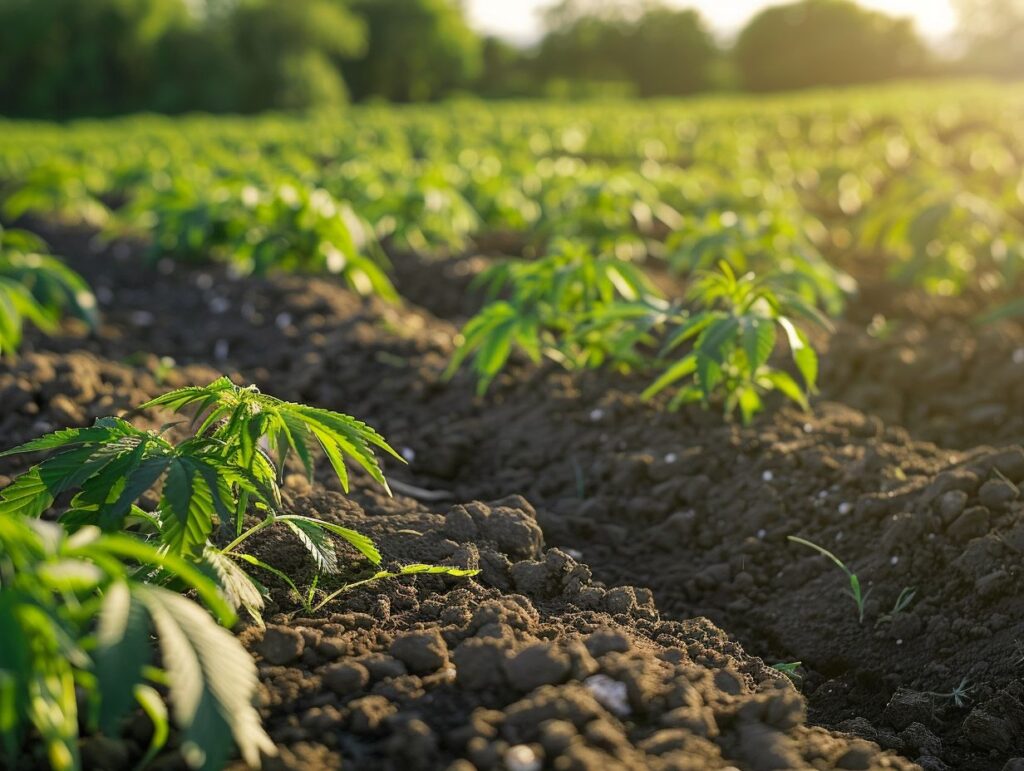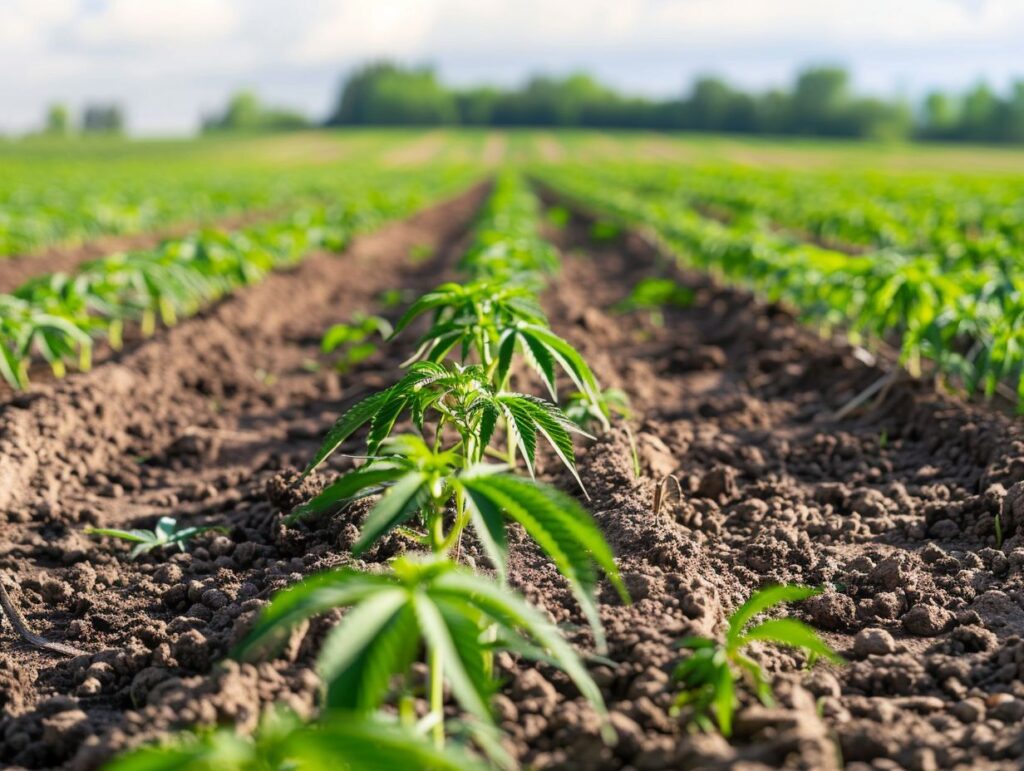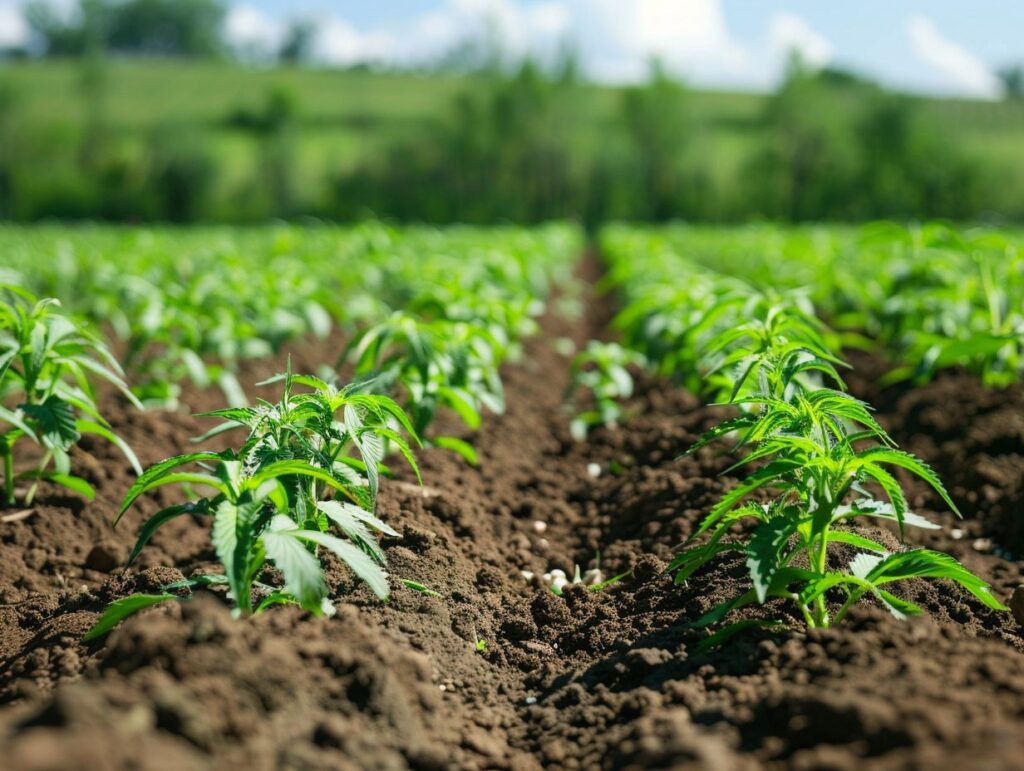Have you ever wondered about the environmental impact of hemp farming?
In this article, we will explore the importance of hemp farming and the numerous environmental benefits it provides.
From improving soil health and erosion control to reducing pesticide use and conserving water, hemp farming offers a sustainable alternative to traditional crops.
We will also compare hemp farming to other crops like cotton, corn, and soybeans, discuss the challenges faced by hemp farmers, and delve into the future of hemp farming.
Stay tuned to learn more about this promising industry!
What Is Hemp Farming?
Hemp farming refers to the cultivation of industrial hemp plants for various purposes such as fiber, seed, and extracts. The practice involves growing specific varieties of the Cannabis sativa plant that are bred for industrial use, distinguishing them from marijuana plants.
The primary distinction between hemp and marijuana lies in the levels of THC present in the plants. Hemp typically contains very low levels of THC, the psychoactive compound found in marijuana, making it non-intoxicating. This makes industrial hemp a valuable alternative crop for farmers, offering diverse products such as hemp fibers used in textiles, hemp seeds for food and oil, and extracts like CBD known for their therapeutic benefits. Industrial hemp cultivation is regulated to ensure compliance with legal THC levels and to facilitate its various industrial applications.
Why Is Hemp Farming Important?
Hemp farming holds significance due to its potential contributions to sustainable agriculture and the environment. It serves as a renewable resource with various applications that can benefit multiple industries.
The versatility of hemp extends beyond its use in textiles and building materials to the production of biofuels, biodegradable plastics, and even nutritious food products. By cultivating hemp, farmers can reduce dependency on chemical pesticides and fertilizers, promoting healthier soil and biodiversity.
Hemp crops have a high yield per acre and require minimal water, making them an efficient and eco-friendly option for agricultural production. Embracing hemp farming practices not only supports sustainability but also helps to reduce carbon emissions and mitigate climate change impacts.
What Are the Environmental Benefits of Hemp Farming?
The environmental benefits of hemp farming encompass a range of advantages that contribute to ecological sustainability. From carbon sequestration to biodiversity enhancement and water conservation, hemp cultivation offers a multitude of positive impacts on the environment.
Not only does hemp farming help sequester carbon dioxide from the atmosphere, which is crucial for mitigating climate change, but it also plays a role in promoting biodiversity by providing habitat for various wildlife species. The cultivation of hemp requires significantly less water compared to many other crops, thus aiding in water conservation efforts. These combined benefits make hemp farming a valuable asset in the quest for a more sustainable and environmentally friendly agricultural system.
Soil Health and Erosion Control
Hemp farming plays a crucial role in improving soil health and controlling erosion through its deep root system that helps prevent soil degradation. Hemp cultivation promotes soil remediation and supports sustainable practices like crop rotation.
The deep taproots of hemp plants help to break up compacted soil, allowing for better water infiltration and reducing the risk of runoff and erosion. The natural process of growing and harvesting hemp aids in replenishing nutrients in the soil, making it more fertile for subsequent crops in a crop rotation system. This continuous cycle of planting different crops helps maintain soil structure and fertility over time, contributing to sustainable agricultural practices and long-term soil health improvement.
Carbon Sequestration
One of the key environmental benefits of hemp farming is its capacity for carbon sequestration, wherein the plant absorbs and stores carbon dioxide from the atmosphere. This process contributes to reducing greenhouse gas emissions and aids in overall carbon footprint reduction.
In addition to capturing carbon from the air, hemp plants have deep root systems that enhance soil carbon sequestration. These roots help improve soil structure, which allows for better carbon storage over time. By cultivating hemp, farmers can play a vital role in mitigating climate change by sequestering carbon in both plant biomass and soil. This dual sequestration approach makes hemp farming a sustainable option for addressing greenhouse gas emissions and promoting a more environmentally friendly way to reduce carbon footprints.
Biodiversity and Habitat Conservation
Hemp farming supports biodiversity conservation by providing habitat for various wildlife species and promoting ecosystem restoration. The cultivation of hemp contributes to maintaining and enhancing the natural habitats of diverse flora and fauna.
This sustainable agricultural practice plays a crucial role in creating a thriving environment for a wide array of wildlife, including birds, insects, and small mammals. By cultivating hemp, farmers are indirectly preserving natural habitats and protecting local ecosystems from degradation. Hemp crops act as a natural carbon sink, absorbing CO2 from the atmosphere and helping mitigate the impacts of climate change on wildlife habitat and ecosystem balance.
Reduced Pesticide Use
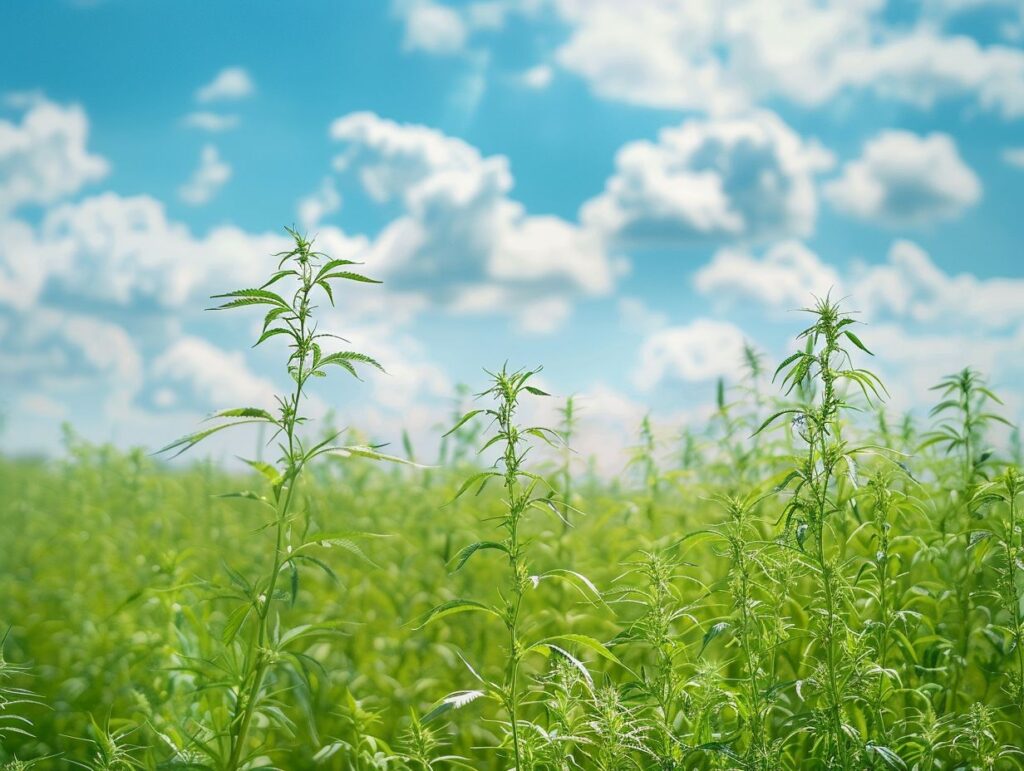
A significant environmental benefit of hemp farming is the reduced need for pesticides due to the plant’s natural resistance to pests. This leads to pollution prevention and supports sustainable practices in agriculture, aligning with principles of regenerative agriculture.
By minimizing the use of synthetic pesticides, hemp farming helps to safeguard water and soil quality, thereby reducing the risk of pollution in these vital resources. The cultivation of hemp encourages a holistic approach to farming, promoting biodiversity and soil health through regenerative agriculture techniques like crop rotation and cover cropping. These sustainable practices not only benefit the environment but also contribute to the overall resilience and productivity of agricultural systems.
Water Conservation
Hemp farming aids in water conservation through its efficient water usage and minimal irrigation requirements, contributing to the preservation of natural resources and promoting clean air quality. The cultivation of hemp minimizes water wastage and supports environmental sustainability.
Hemp’s deep root system helps prevent soil erosion and maintains soil quality, which in turn plays a vital role in water filtration and retention. By absorbing harmful pollutants from the soil and air, hemp contributes to cleaner air quality, making it not just a valuable crop for various industries but also a crucial ally in the ongoing battle for a healthier environment.
How Does Hemp Farming Compare to Other Crops?
When compared to traditional crops like cotton, corn, and soybeans, hemp farming emerges as a sustainable alternative with numerous environmental benefits. Its cultivation embodies sustainable solutions and practices that address various ecological challenges.
One key aspect that sets hemp farming apart is its ability to thrive with minimal water usage compared to water-intensive crops like cotton. This aspect is crucial in regions facing water scarcity, where traditional crops often strain local water resources.
Hemp’s deep root system helps prevent soil erosion and promotes soil health, reducing the need for chemical fertilizers. By rotating hemp with other crops, farmers can also improve soil biodiversity and decrease pest pressures naturally, fostering a more sustainable agricultural ecosystem.
Hemp vs. Cotton
In the comparison between hemp and cotton farming, hemp stands out for its production of sustainable textiles and natural fibers that contribute to green innovation. The use of hemp in textile manufacturing signifies a shift towards eco-friendly and innovative practices.
Hemp cultivation requires significantly less water compared to cotton, making it a more sustainable choice for textile production. Hemp plants have natural pest-resistant properties, reducing the need for harmful pesticides. The versatility of hemp fibers allows for the creation of durable and long-lasting textiles that are also biodegradable. This aligns well with the growing demand for eco-conscious products in the fashion and textile industries, driving forward the trend of using natural fibers for a more environmentally-friendly future.
Hemp vs. Corn
When comparing hemp and corn farming, hemp demonstrates potential for biofuel production, which aligns with the transition towards clean energy sources. Hemp cultivation offers low-impact farming methods that support sustainable energy solutions.
Hemp’s versatility in biofuel production means it can be a key player in reducing carbon emissions. The process of converting hemp into biofuels requires less energy and produces fewer greenhouse gas emissions compared to traditional fossil fuels. This contributes to the overall efforts to combat climate change and promote environmental sustainability. The sustainable farming practices associated with hemp cultivation, such as minimal pesticide use and soil enhancement, make it an attractive option for those seeking environmentally friendly alternatives in the agricultural sector.
Hemp vs. Soybeans
In the context of hemp versus soybeans, hemp farming showcases the principles of a circular economy by promoting sustainable land management practices and the production of eco-friendly materials. Hemp cultivation contributes to the development of sustainable materials within a circular economic framework.
On the other hand, soybean cultivation, although valuable in its own right, does not present the same versatility in fostering a circular economy. Hemp’s ability to thrive in various climates and soil types makes it a robust crop choice for sustainable agriculture. Hemp’s fast growth rate and minimal need for pesticides or herbicides further highlight its eco-friendly characteristics, making it a promising candidate for the creation of sustainable materials in industries ranging from textiles to construction.
What Are the Challenges of Hemp Farming?
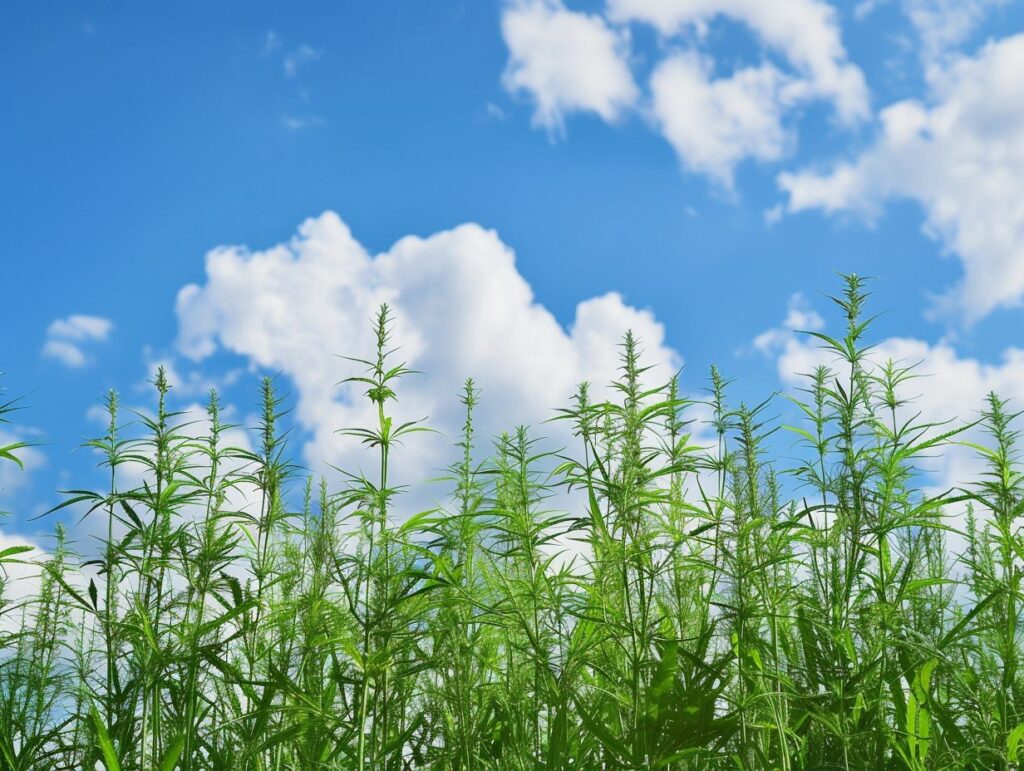
Despite its environmental benefits, hemp farming faces challenges such as legal restrictions and inadequate infrastructure that hinder its widespread adoption. The limited availability of seeds and labor-intensive nature present obstacles to the industry.
The legal constraints surrounding hemp cultivation vary from country to country, with regulations often being complex and subject to change. These restrictions can make it difficult for farmers to navigate the necessary permits and licenses, thereby delaying or impeding their operations. The lack of proper infrastructure, such as processing facilities and transportation networks, makes it challenging for hemp growers to bring their products to market efficiently. This infrastructure deficiency adds costs and logistical complications, further straining the viability of hemp farming ventures.
Legal Restrictions
The legal restrictions surrounding hemp farming necessitate a shift towards ethical farming practices that align with conservation efforts and environmental stewardship.
By embracing ethical farming methods, farmers can contribute to the overall health of the ecosystem and protect natural resources for future generations. Upholding environmental stewardship is not only a legal requirement but also a moral obligation to preserve the integrity of the land.
Through sustainable cultivation practices, such as crop rotation and minimal pesticide usage, hemp farmers can reduce their environmental impact and promote biodiversity in the agricultural landscape. By prioritizing ethical farming and environmental stewardship, the hemp industry can set a positive example for sustainable agriculture and land stewardship.
Lack of Infrastructure
The lack of infrastructure for hemp farming poses challenges to ecosystem restoration and sustainable consumption practices. Addressing this issue requires a collective effort towards promoting green living and sustainable agricultural practices.
- Inadequate infrastructure can hinder the effective cultivation and processing of hemp, which are vital components in transitioning towards more sustainable consumption patterns.
- By investing in proper infrastructure such as research facilities, processing plants, and transportation networks, we can support the growth of the hemp industry and promote eco-friendly practices.
- Embracing green living principles in farming not only benefits the environment but also creates a healthier ecosystem for future generations.
- It is crucial for policymakers, farmers, and consumers to work together in implementing sustainable solutions that can drive positive changes in hemp farming and beyond.
Limited Seed Availability
The limited availability of hemp seeds presents obstacles to land rehabilitation initiatives and the development of green design solutions. Encouraging sustainable packaging practices requires overcoming the challenge of seed scarcity in hemp farming.
This scarcity not only hampers efforts to restore degraded landscapes through the cultivation of hemp but also impedes the integration of sustainable materials in innovative design processes. Green designers face the dilemma of sourcing adequate hemp seeds for their eco-friendly products, hindering the widespread adoption of environmentally conscious practices. By addressing the seed availability issue, the industry can unlock new possibilities for utilizing hemp in green architecture, product packaging, and other sustainable solutions.
Labor Intensive
The labor-intensive nature of hemp farming demands a commitment to responsible production methods that align with green building standards and the utilization of recyclable materials.
Overcoming the labor challenges necessitates a focus on sustainable practices and resource efficiency. Implementing innovative techniques like drip irrigation systems and using natural fertilizers can help reduce labor inputs while promoting eco-friendly cultivation. Investing in renewable energy sources such as solar panels for powering farming equipment contributes to reducing the carbon footprint associated with hemp cultivation.
Embracing a circular economy approach by integrating closed-loop systems and upcycling waste materials further enhances the sustainability of hemp farming operations.
What Is the Future of Hemp Farming?
The future of the hemp industry holds promise for technological innovations and advancements in green practices that can significantly impact the environment. As hemp becomes increasingly recognized for its benefits, the industry is poised for growth and positive environmental contributions.
Incorporating green technology in hemp production processes can lead to reduced carbon emissions and water usage, aligning with the growing demand for sustainable practices. Advancements in eco-friendly hemp cultivation methods, such as regenerative agriculture and organic farming practices, could further enhance the industry’s environmental impact. As consumers prioritize environmentally conscious products, the adoption of green technologies in the hemp industry not only meets market demands but also sets a precedent for other sectors to embrace sustainability and contribute to a cleaner, greener future.
Frequently Asked Questions

What are the environmental benefits of hemp farming?
Hemp farming has numerous environmental benefits, including soil remediation, water conservation, and carbon sequestration. It is also a sustainable and eco-friendly crop that requires little to no pesticides or fertilizers.
How does hemp farming help with soil remediation?
Hemp is a natural bioaccumulator, which means it absorbs toxins and heavy metals from the soil. This process helps to remediate contaminated soil and makes it suitable for future crop growth.
What impact does hemp farming have on water conservation?
Hemp requires significantly less water to grow compared to other crops, making it an ideal option for areas with water scarcity. Additionally, it helps to prevent erosion and promotes healthier soil, which can improve water quality.
Why is hemp farming considered a sustainable and eco-friendly practice?
Hemp is a renewable resource that grows quickly and can be used for various purposes, such as clothing, building materials, and biofuels. It also requires fewer resources to grow, making it a more sustainable alternative to other crops.
How does hemp farming contribute to carbon sequestration?
Hemp absorbs high levels of carbon dioxide from the atmosphere during its growth cycle, making it an effective tool for mitigating climate change. It also has a deep root system, which helps to improve soil health and store carbon in the ground.
Does hemp farming have any benefits for wildlife?
Hemp farming can benefit wildlife in several ways. The plant provides a habitat for various beneficial insects, and its deep root system helps to prevent soil erosion and promote biodiversity. Additionally, hemp farming does not require the use of harmful pesticides, which can protect pollinators and other wildlife species.


